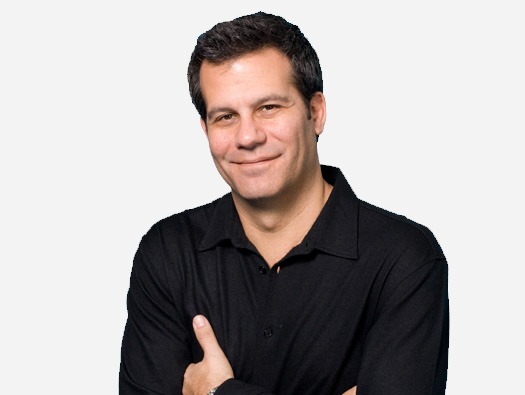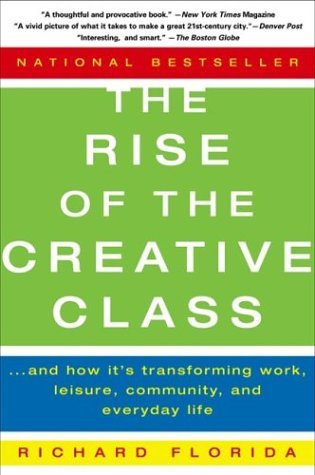The Rise of the Creative Class Summary
5 min read ⌚
 And How It’s Transforming Work, Leisure, Community and Everyday Life
And How It’s Transforming Work, Leisure, Community and Everyday Life
“The Rise of the Creative Class” – The newest power that dominates modern society is not money, power or size. It is creativity.
If you wish to change the world, walk along the Creative Class. But what exactly is the Creative Class?
The Creative Class is a group consisted of people whose work requires creativity, no matter the profession. It does not matter if you are an engineer, designer, architect, writer, musician, artist, lawyer, entrepreneur, educator, health care provider, or anything else – you can still be a part of the Creative Class. The main characteristic is: Creative Class has and sells creativity.
So, how can you join the Creative Class? Moreover, what is there in it for you?
We’ll try to show you the way with our “The Rise of the Creative Class summary”. Make sure to read on.
Who Should Read “The Rise of the Creative Class”? and Why?
There are two sides to this book. On the one hand, the book perceives the developmental and sociological impact of creativity. On the other hand, in only two years, it has lost some of its shine. The burst of the dot.com bubble, the 9/11, as well as other global events, took their toll on the creative economy. In any case, we consider this book worth suggesting to all readers, based on its belief in the changing financial and social power of creativity, its broad view, and its fantastic references.
However, you ask, who is Richard Florida and what is the content of “The Rise of the Creative Class”? Let us answer that for you.
About Richard Florida
 Richard Florida teaches Regional Economic Development at Carnegie Mellon University and is a columnist for Information Week.
Richard Florida teaches Regional Economic Development at Carnegie Mellon University and is a columnist for Information Week.
“The Rise of the Creative Class Summary”
Creativity has been necessary since the beginning of humankind.
At the beginning of civilization, the innovation of agriculture was a massively creative advance. People were able to extract more value per unit of land than they ever did as hunters. The Industrial Revolution was the next big step that brought further specialization and labor division.
Presently society is in the midst of another significant influx of creative development. The pressure between creativity and organization is among today’s most important issues since creative individuals do not adjust well to charge-and-control direction.
Creativity comes in various shapes and forms; mechanical, economic, cultural and artistic creativity all interact among themselves. For instance, take note of the connection between the PC illustrations industry and the advanced music industry.
A shared commitment to imagination and creativity fuels our economy and society. No format yet exists for the social and monetary framework that will recognize the coming Creative Age.
However, a couple of things are clear, stay tuned to learn how:
First, innovation will not set us free, since it does nothing to enhance human instinct. To be valuable, technology should be bolstered by social, organizational and financial components.
Second, large organizations will not vanish. An innovative economy needs big, little and medium size associations. Furthermore, independence is not limitless. Free market activity will always dictate the balance of power between companies and individuals. Indeed, a few people may succeed being free agents, yet others will search for stable careers with set up businesses.
Lastly, the economy is “going Hollywood.” In the past times, individuals moved to places where organizations were, trying to work for them. These days, however, companies move to places where creative individuals live and offer them jobs.
The movie production had to be situated in Hollywood since that is the place where the skilled individuals lived.
Likewise, cutting-edge organizations must be in places like the Silicon Valley since that is the place the creative workforce in those enterprises lives. Creativity, not capital, is the concentration, the magnet and the primary impetus of today’s economy. Of course, creativity is restrained and comes with its imperatives.
To find out all aspects of creativity and the ways it leads today’s economy, pick up “The Rise of the Creative Class.”
If you are not convinced yet, stay with us as we move on to listing some of the many lessons you may find between this book’s covers.
Key Lessons from “The Rise of the Creative Class”:
1. Social and Economic Frameworks that Support the Creative Economy
2. Creative Class Values and Goals
3. How to Manage for Creativity
Social and Economic Frameworks that Support the Creative Economy
Venture capital funds open the market to new companies and new ideas. New manufacturing models, such as modular manufacturing and outsourcing, take specialization to a higher level, taking into consideration a more efficient utilization of assets. Social demeanors favor, bolster and support imagination and new strategies.
Creative Class Values and Goals
The Creative Class has various values, but money is rarely (if ever) one of their motivators. So, what exactly are the creative types searching for?
Creative people need to feel that they have the chance to make a difference. They need to be respected by the ones they respect and work in a place where they feel valued. They need the opportunity to advance their knowledge and skills, some money flow to pay for their living expenses, and a stable working environment.
How to Manage for Creativity
The Creative Class consists of individualists, who do not identify with companies, but rather with their chosen profession. Workplaces are transitioning, because work itself is evolving – creativity, not uniformity, is the new workplace movement.
Like this summary? We’d Like to invite you to download our free 12 min app, for more amazing summaries and audiobooks.
“The Rise of the Creative Class” Quotes
The creative individual is no longer viewed as an iconoclast. He—or she—is the new mainstream. Share on X It is not that gays and diversity equal high technology. But if your culture is not such that it can accept difference, and uniqueness and oddity and eccentricity, you will not get high tech industry Share on X As the economy has become more specialized and the occupational division of labor has deepened, the Creative Class has increasingly outsourced functions that were previously provided within the family to the Service Class. Share on X The Creative Economy is driven by the logic that seeks to fully harness—and no longer waste—human resources and talent. Share on X If you are a scientist or engineer, an architect or designer, a writer, artist, or musician, or if your creativity is a key factor in your work in business, education, healthcare, law, or some other profession, you are a member. Share on XOur Critical Review
Overall this book offers nothing new when it comes to insight. However, it is a wonderful collection of ideas put together in a clear and concise form. The way the author puts the information forward is entertaining and captivating, so it will most probably affect your way of thinking and open your eyes to the events that surround you.
Emir is the Head of Marketing at 12min. In his spare time, he loves to meditate and play soccer.


 And How It’s Transforming Work, Leisure, Community and Everyday Life
And How It’s Transforming Work, Leisure, Community and Everyday Life




